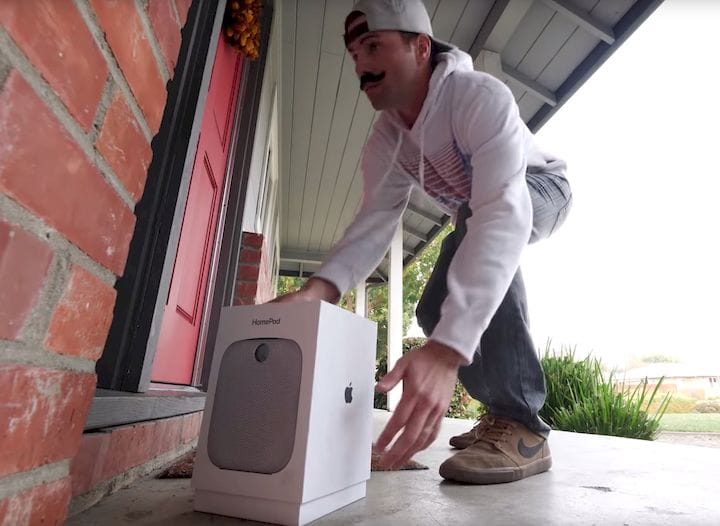![Testing the 3D printed “Karma Glitter Bomb” [Source: YouTube]](https://fabbaloo.com/wp-content/uploads/2020/05/image-asset_img_5eb0a02c95795.jpg)
An incredible viral video appeared this week, and it involves 3D printing.
The project, initiated by YouTuber Mark Rober, tells the story of how he defeated a number of “porch pirates” from stealing unattended packages delivered insecurely to residential doorsteps. Evidently Rober was victim to this increasingly common crime, and felt it necessary to leverage his considerable design skills against the perps.
Rober was so outraged that he designed and built, with the assistance of a technician friend, a powerful “Karma Glitter Bomb” activated when opened by the perp. The device was outfitted with considerable electronics, including GPS, four-way imaging, cloud video storage and timed “fart sprays”. It was an incredible feat of home (over?) engineering.
![Attaching a “fart spray” device to the 3D printed glitter bomb [Source: YouTube]](https://fabbaloo.com/wp-content/uploads/2020/05/image-asset_img_5eb0a02d06d44.jpg)
California-based Rober himself is a mechanical engineer, and worked at NASA from 2004 to 2013. Some of his work at NASA ended up inside the Curiosity Rover, which is now busily cruising the surface of another planet – Mars. So he’s quite familiar with designing devices. But he’s now very well known for his YouTube channel, where he presents videos on fun gadgets.
![Mark Rober and the 3D printed glitter bomb [Source: YouTube]](https://fabbaloo.com/wp-content/uploads/2020/05/image-asset_img_5eb0a02d54429.jpg)
Glitter is truly an awful material. Once deployed it is nearly impossible to remove using any known technique. The small plastic sections stick and are extraordinarily difficult to pick up. And there are millions of them, as Rober chose to have his device spin centrifugally about a pound of an especially fine formulation of the nefarious substance.
I’ve often thought this material should be banned from civilization, but perhaps in this case there is justification for its use.
![CAD design used for the 3D printed glitter bomb [Source: YouTube]](https://fabbaloo.com/wp-content/uploads/2020/05/image-asset_img_5eb0a02d99d62.jpg)
The Glitter project did involve 3D printing.
Rober designed a mounting system to hold the four Android phones used for GPS, network connectivity and video capture, as well as the custom circuit board that controlled the device and its evil sequence of activities.
![Custom circuit board for the glitter bomb [Source: YouTube]](https://fabbaloo.com/wp-content/uploads/2020/05/image-asset_img_5eb0a02de1a45.jpg)
The 3D printed portion of the project was apparently 3D printed at Shapeways, no doubt in strong nylon material from one of their several EOS 3D printers.
If you haven’t watched the video, as have nearly 40M people at this point, please do so now:
And now watch the “behind the scenes” video by tech Sean Hodgins:
My interest in this project is obviously the 3D printing component.
Here we have a relatively complex project that was partially enabled by the ability to produce a custom structure ideal for this particular purpose. Without 3D printing, this project could have been more difficult to complete.
![The 3D printed main component of the glitter bomb [Source: YouTube]](https://fabbaloo.com/wp-content/uploads/2020/05/image-asset_img_5eb0a02e30cd7.jpg)
It does show how, if one has the design capability, to very quickly and cheaply produce a required part with near-production quality for a given situation. That’s a power most people have never had in their hands until just recently.
My hope is that Rober’s project may inspire others to investigate the possibilities of 3D printing, now that he’s shown what is possible when a need can be serviced with 3D printing technology.
Via YouTube











This week’s selection is a 3D printed Coronavirus!